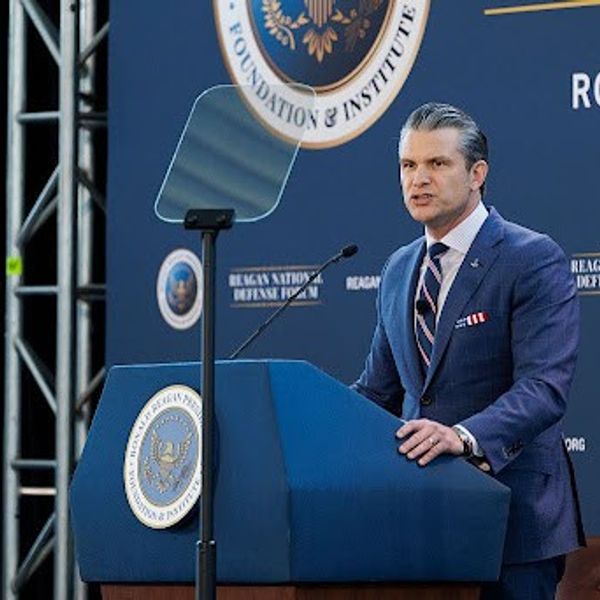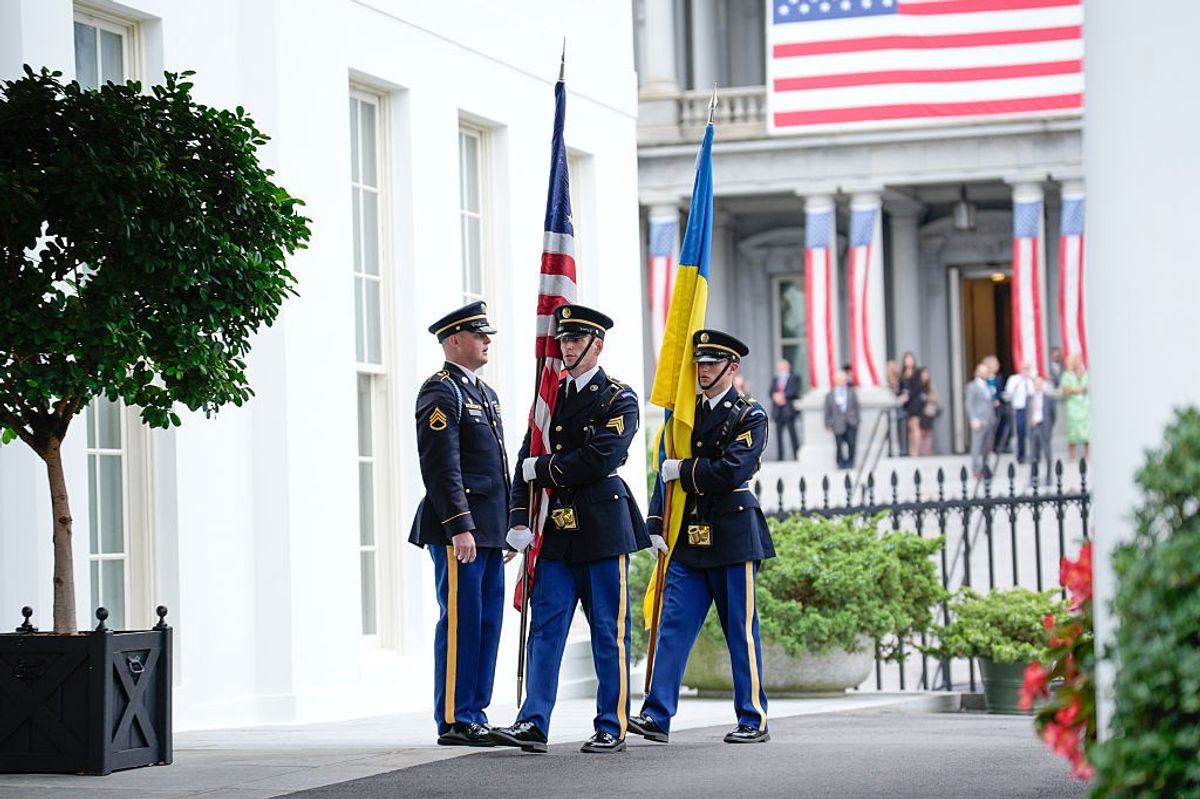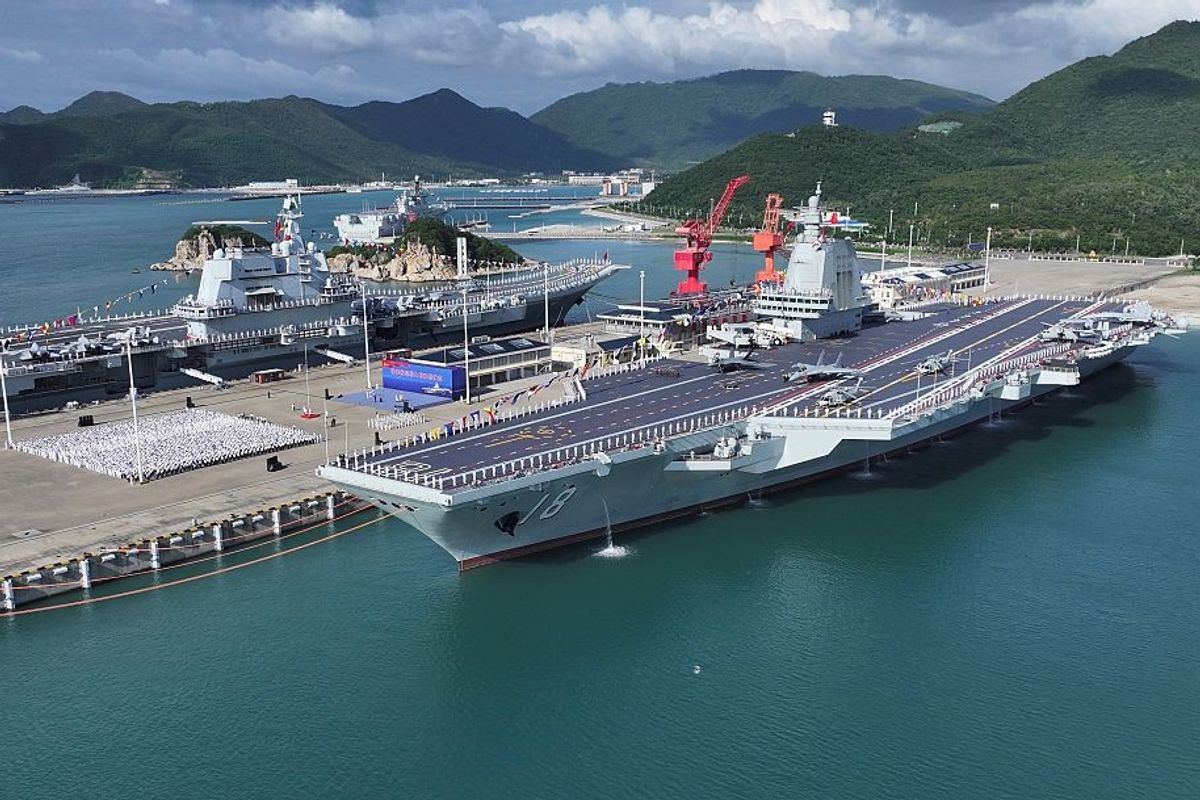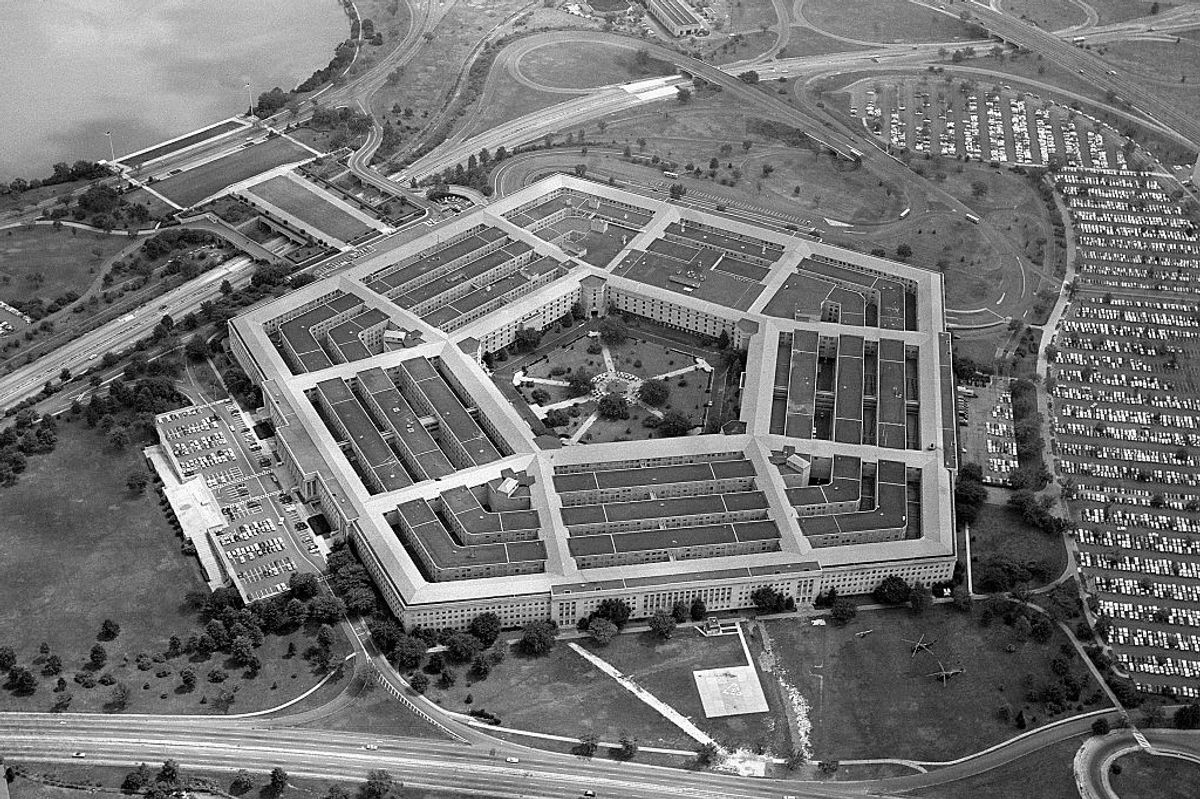EXPERT Q & A – The U.S.-China competition takes many forms – from military buildups to the AI race to the recent Trump administration tariffs and retaliatory measures imposed by Beijing. A recent report in The Wall Street Journal looked at an area that gets far less attention: the ways in which China is using sophisticated data-gathering vessels to conduct “lawnmower-style sweeps” of the seabed for everything from deep-sea mining of minerals to the collection of military intelligence. In a study of 64 Chinese research and survey vessels, the Center for Strategic and International Studies (CSIS) found more than 80% were involved in “advancing Beijing’s geopolitical agenda.”
Cipher Brief Managing Editor Tom Nagorski spoke about China’s mapping of the seabed – and similar efforts by the U.S. – with Nick Thompson, a former CIA paramilitary case officer and naval special warfare development group operator.
The Cipher Brief: Why is China doing this to the extent it is, and why does any major power spend so much time hoovering up data from the ocean floors?
Thompson: These vessels are very capable science and research ships, potentially running multibeam echo sounders off the hull, which spread out acoustic waves in a fan-like pattern, very good for covering large distances. And they can just go back and forth, collecting the sonar. And then the post-mission product would be stitched together, and you'd have a nice clear imagery of the sea floor.
Now, why they want to do that – that could involve many different things. That could be looking for rare-earth minerals — cobalt, copper, nickel, manganese. Could be looking for oil and natural gas. It could be inspecting some kind of cable or pipelines. There's lots of different reasons. But a lot of it appears to be intelligence gathering.
Near the coast of India, a couple years ago, a very capable Chinese vessel, a Yuan Wang-class tracking ship – I believe there are four active ones – those showed up right before the Indians decided to do a missile test. This year, in January, you had Chinese vessels hanging around Sydney, Australia, actually diverting commercial aviation. It's fitting a pattern. To me, it's very much about intelligence gathering. In all these incidents, whether near India or Australia, the Philippines, Taiwan, the Chinese are really probing. They're constant. And they're expending resources, fuel and just gradually doing more and more, trying to normalize that kind of behavior. This is what we're seeing.
The Cipher Brief: A CSIS report said that of 64 research and survey vessels operated by various Chinese entities, 80% of those showed behavior that they suggested were involved in, “advancing Beijing's geopolitical agenda.” Am I right that the United States does this too?
Thompson: Survey and inspection of critical infrastructure, that's very important. We have talked previously about the world’s undersea cables and the criticality to communications for military, also for the financial markets. So yes, we do the same. We also uphold the freedom of navigation, in an honorable way, reminding China that we're not going to listen to your nine-dash line theory (that claims much of the South China Sea).
Experts are gathering at The Cipher Brief’s NatSecEDGE conference June 5-6 in Austin, TX to talk about the future of war. Be a part of the conversation.
The Cipher Brief: The CSIS used the phrase “geopolitical agenda,” which could encompass all kinds of things. Which, if any of these activities, would worry the United States? I assume China's push to find rare earth minerals at the bottom of the sea might be a worry in terms of competition and economics and so forth, but are there direct military applications that would be more concerning?
Thompson: Yes. With the rare earth minerals piece, the Chinese are winning. And with shipbuilding, the Chinese are winning. That's really letting them project a lot of power. Those minerals that we are talking about – cobalt, copper, nickel, manganese, that has to do with alloys but also batteries. Batteries are very much a national security issue.
The Indian incident, I look at it like the string of pearls theory. And what that encompasses is the Chinese kind of encircling India with these vessels, exerting pressure on them, but also keeping tabs on them. So everywhere the Chinese put down a stake, think of that as like a little circle on a map. That becomes a nice set of pearls that reach all the way from mainland China, well into the Middle East. There are some very critical choke points that have to do with international trade, just everyday cargo, and obviously military applications, and that is submarines. So you’ve got the Lombok Strait, the Malacca Strait, Bab el-Mandeb Strait, and the Strait of Hormuz. Those are just vital checkpoints that the Chinese probably, in my assessment, would really want to have a good idea of what's coming in and out of it under the sea.
The Cipher Brief: So that's intelligence gathering that they are doing in these areas?
Thompson: I look at it as preparation of the environment. So the vessels that were flagged in the report that you're referencing, if you take a look at them, what really stands out to me is, look at the cranes. What kind of cranes are they working with? A-frames at the stern, port and starboard side cranes. OK, then, why? Why do they have those? They could be putting many different things in the water.
A towed array, sometimes vessels will do that. That is essentially a passive hydrophone that is listening to what's out there, what's underneath the water. You have to maybe let it out a little bit further so that it doesn't interfere with the vessel that's towing it.
The other one would be launching remotely operated vehicles, ROVs, and then of course, autonomous underwater vehicles AUVs). So when I see those cranes, especially the A-frame, that's what I'm thinking of.
Then there are multibeam echosounders. Those are usually good to about 4,500 meters. After that, if you want to get deeper into the 6,000-meter range, which is where you would want to potentially install hydrophones to listen for submarine activity or decoys, you would need some kind of AUV (autonomous underwater vehicle). And so when I looked at those vessels, that's really what stands out to me.
The communications pieces – those are usually going to be in close enclosures, so you can make some assessments but you can't really see exactly what is there. But it's really telling to see the infrastructure on the decks of the vessels.
The Cipher Brief Honors Dinner is on April 18th in Washington D.C. Apply now for your seat at the most glamorous spy dinner of the year. Find out more about this invite-only event at cipherbriefhonors.com
The Cipher Brief: You mentioned that string of pearls notion. I want to raise a part of the world that has gotten a lot of attention recently, and that's the Cook Islands. A small island chain and a country of only about 15,000 people in the South Pacific, and China has now done a partnership deal with the Cook Islands. Is this another piece of that “string” for China? Does this then provide a big chunk of open water for the Chinese to do the sorts of things you're talking about?
Thompson: It sure does, because the Cook Islands are among the very few nations that have actually given the Chinese a permit to do exploration for these seabed minerals. The Cook Islands case reminds me of the Maldives. The Maldives traditionally had India there, and recently kicked them out, with a new president leaning towards China. We can go on and on with the pearl analogy, but obviously these are important ones.
The Cipher Brief: What can the United States do about any of this, given that the U.S. Navy moves about far from its own shores – and so the United States can't really make a point in the international community that the Chinese are doing something they shouldn't. And presumably we're not going to start a conflict over this. Is there any action the United States can take?
Thompson: I think it's parallel efforts — diplomacy, economic pressure, supporting allies. NATO gets beat up a lot, but NATO created Task Force X for autonomous maritime dominance. I think that's kind of the model that we're going to have to see. And as I said, the Chinese are outpacing us on shipbuilding by so much. I saw President Trump's address the other night — there was a mention of shipbuilding. How are we going to do that? Are we going to look to other countries like the South Koreans, the Japanese, to get us more assets? And maybe we pair that with the autonomous assets. You could have surface vessels. You could have aerial, you could have underwater vessels. So I think there's going to have to be some kind of combination of everything I just said, to keep a pulse on the Chinese.
They [the Chinese] get called out all the time. The Russians get called out all the time. The Iranians, too. None of them care. But we can't just let them run over us and keep doing this nefarious action. We have to stand up to them.
The Cipher Brief is committed to publishing a range of perspectives on national security issues submitted by deeply experienced national security professionals.
Opinions expressed are those of the author and do not represent the views or opinions of The Cipher Brief.
Have a perspective to share based on your experience in the national security field? Send it to Editor@thecipherbrief.com for publication consideration.
Read more expert-driven national security insights, perspective and analysis in The Cipher Brief















